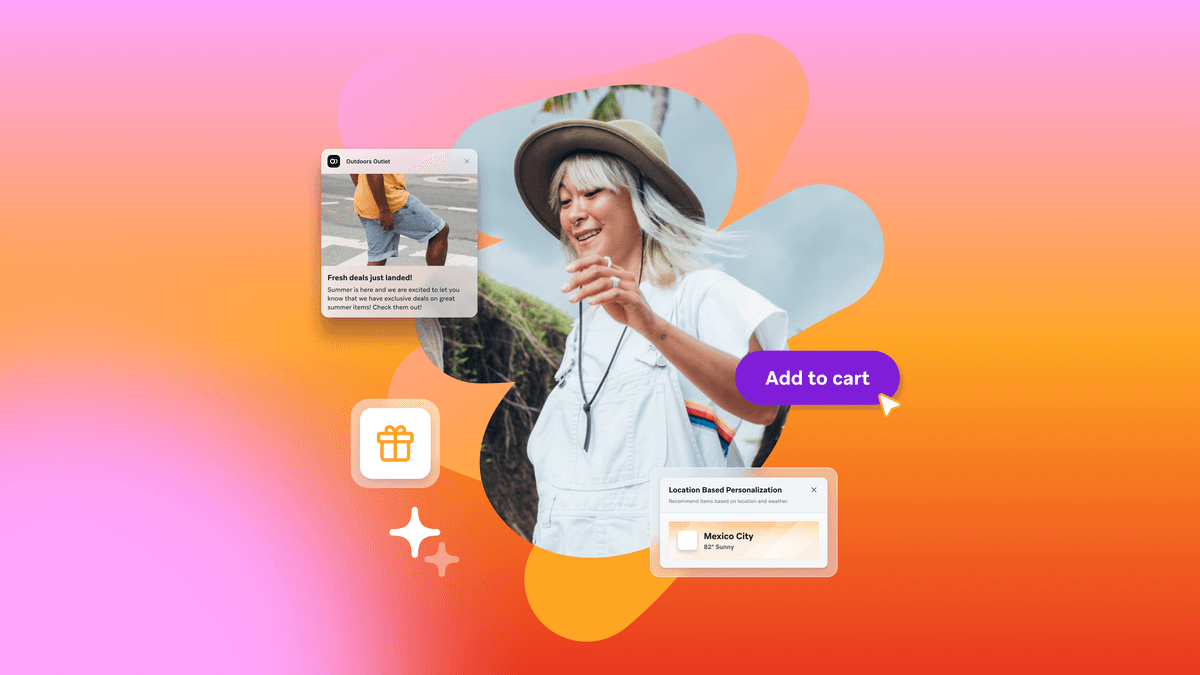What It Takes to Send and Optimize an Email Campaign, Step by Step
Published on August 16, 2019/Last edited on August 16, 2019/8 min read


Jennifer Keck
CopywriterPicture your inbox. If you’re like most people, it’s full of emails waiting for you to take action. The average office worker receives 121 emails per day, and about 293 billion are fired off every 24 hours.
Why are marketers sending so many emails when we have fun new channels like Instagram and Snapchat? Because email still works. It generates some of the highest ROI, bringing in $38 for every $1 spent. But you’ll need a great email campaign get people’s attention (you know, given that whole 293 billion emails thing).
Here’s how to send and optimize an email campaign that works:
1. Build an Organic Email List
You may be tempted to buy an email list, but you’ll get much better results when your leads are warm. If someone has already made a purchase, subscribed to a newsletter or downloaded a whitepaper, they’re more likely to respond positively to the messages you send.
2. Scrub Your Email List
Did you know email databases tend to degrade by 22% per year? Part of this is due to contacts opting out after initially opting in to receive emails. Others change jobs or abandon old email addresses, causing your emails to bounce.
Get too many bounces, and email providers will brand you with a bad reputation, sending your emails into users’ spam folders or worse—not delivering them at all.
You can scrub the list yourself by checking for duplicates, hard bounces from past emails, and any opt-outs your email platform didn’t automatically remove. Or you can use an email verification service. Just keep in mind that no service can guarantee a 100% delivery rate.
3. Establish Your Goals and Segment Your Email List
As with any marketing campaign, you should start by setting goals. Do you want readers to buy a product? Schedule a call? Attend an event? Whatever it is, your goals for this particular email will help decide which type of campaign to use, who you should target, and whether your campaign is working. Knowing the “why” of your message is essential to determining what conversions you should track—otherwise, you’ll have no way of knowing if the campaign has achieved its goals or not.
If it’s designed to be sent in response to customer behavior, rather than delivered at a set time, you’ll also need to use your email marketing platform to determine what triggers should be associated with that particular message. (Think abandoned cart campaigns and transactional messages like order confirmations.)
Once you’re clear on what this email campaign is meant to achieve, you’ll want to break your customer base into smaller segments to better target and personalize your outreach. How you do this will depend on your target audience and your marketing goals. Marketers often segment emails by one or more of the following criteria:
- Geography
- Demographics
- Customer Personas
- Past purchases
- Position in the sales funnel
You can segment your audience by any criteria that’s likely to help you personalize your campaign and increase your ROI.
4. Choose Your Email Delivery Timing
When are your recipients most likely to open your emails? Mornings? Evenings? Weekends? (And don’t forget about time zones if recipients live in different regions.) When you deliver messages to your customers can be just as important as the content of those messages—but lots of brands aren’t being thoughtful enough when it comes to the timing of their email campaigns. There are five major approaches you can take:
- Immediate Send Scheduling: This is what is sounds like, allowing brands to send ad hoc email campaigns as soon as they’re ready.
- Time-Based Scheduling: This allows marketers to schedule sends in advance for a particular predetermined time—for instance, delivering an email campaign at 7:00 p.m. ET, a half-hour before the Olympic Opening Ceremonies.
- Action-Based Scheduling: This allows brands to trigger email sends in response to user engagement with previous messages or behavior on their website or app, ensuring responsive messaging. (Think sending a message when a user abandons a cart on your website.)
- API-Triggered Scheduling: This makes it possible for marketers to triggers email sends based on information contained within their own proprietary servers or systems, or from an external API, like a weather-information or location-data platform. (So you could send a particular campaign only when it’s snowing where recipients are.)
- Send-Time Optimized Scheduling: This allows marketers to leverage machine learning to automatically send a given message during each recipient’s unique high-engagement windows. (Optimal send time is determined through analysis of past user interactions for each channel to narrow in on the time when the user has been most likely to engage.)
With a send-time optimization tool like the Braze platform’s Intelligent Delivery, marketers can increase the chances that the emails they send are right near the top of the inbox when each recipient checks in, boosting the efficacy of their email strategy.
5. Follow Email Best Practices and Personalize Your Messaging
Persuasive copy, a strong call-to-action, and a clear unsubscribe option are all essential parts of your email. But today, you need to take traditional best practices a step further. Emails that are personalized see a 28% lift in open rates. To really get the benefits, you’ll need to personalize as much as possible. Here are just a few ways to do it:
- Subject Line: The right subject line can significantly improve your open rates. Yet you may not need to stress over it as much as you think. By leveraging subject line A/B testing, you can easily compare the effectiveness of, say, “Michael, get 20% off widgets today!” compared to “Michael, get 10% off widgets!” and ensure that you’re gaining new insights into what moves the needle with each send.
- Email Copy: At the very least, personalize your greeting with first names. If you’ve segmented your email list by criteria that could change your content, make sure your message is tailored to that audience. You can take this further by using dynamic content to responsively pull in personalized content based on each recipient’s previous engagement with your brand—and research conducted by Braze has found that doing so can lead to a 25% boost in conversion rates.
- Images: Your email segments can also help you personalize images. For example, a retailer selling men’s and women’s shoes can segment offers by gender and change product images accordingly.

6. Ensure a Coherent Email/Post-Email Experience
When one of your customers receives an email from you, that’s not usually the end of the road. Most of the time, you’re looking to get them to take action—and that often means driving them back to your website or app. But it’s important to make sure that the place you’re sending them feels intuitively connected to the message leading them there. If you’re sending a promotional email highlighting a sale on toaster ovens, you’re going to see more conversions if you include a deep link that brings recipients right to a page within your app or website associated with that sale, instead of dropping them on your homepage.

7. Send Test Emails
Your email may look fine inside your email marketing platform, but your audience may get a different view. Send test emails to different email providers (Outlook, Gmail, etc.) and open them on different browsers to see how they render. You want to make sure the layout, fonts, and images look good no matter where you open it. Don’t forget to view them on mobile, too. About 68% percent of emails are opened on a mobile device—so leveraging responsive design can do a lot to improve the user experience for recipients. (Want a shortcut? Take advantage of the Braze platform’s Inbox Vision feature to easily and seamlessly test message appearance across a wide range of different inboxes and browsers.)
8. Track Results and Optimize Your Campaign
Once your campaign goes live, it’s time to start analyzing the results. Metrics to track include:
- Email delivered rates
- Open rates
- Click-through rates
- Conversion rates
- Unsubscribes
Are your open rates low? Try a new subject line or try delivering your messages at a different time of day. Are people opening your emails, but aren’t clicking on links? Try tweaking your copy and ensuring that your message’s call to action is clear. Remember, testing is key. You need to be testing to see what your recipients respond to—and once you’ve identified what works, it’s important to keep testing and iterating to ensure that your approach doesn’t get stale over time.
Final Thoughts
With email, there are always opportunities for innovation and improvement. If you keep these 10 key tips in mind, you can avoid a lot of potential messaging pitfalls and support stronger performance from your email program, message by message and campaign by campaign.
Ready for more insight into how you can improve your email campaigns? Check out Emails on Email: 14 Perspectives On Email Marketing, Deliverability, Engagement, Best Practices, and More.
Related Tags
Be Absolutely Engaging.™
Sign up for regular updates from Braze.
Related Content
View the Blog
The future of payments: Enhancing innovation and trust in a changing landscape

Erin Bankaitis

Multichannel optimization: Unlocking a more cohesive strategy for engaging customers

Team Braze

Customer engagement must-haves for peak shopping season
